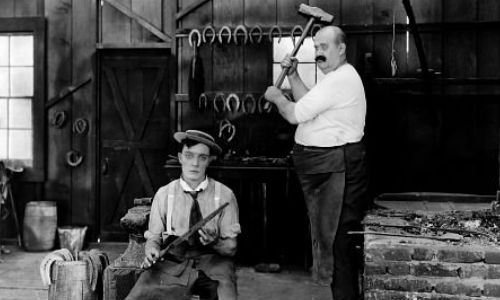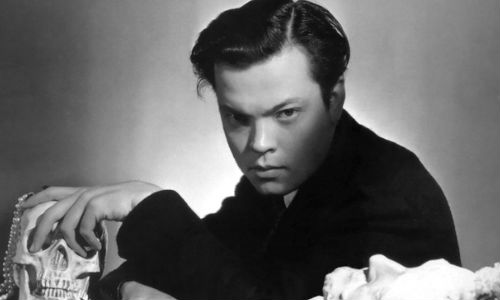
Unless you’re an archeologist in the German state of Brandeburg with a badger accidentally uncovering 12th century burial finds for you, finding anything long lost can be a long and time-consuming ordeal.
Nowhere is this better illustrated than in the arts where paintings, sculptures, and most pertinently to this blog, films and TV show episodes can go missing for any number of reasons – war, theft, outright carelessness – never to be seen again.
Only sometimes, as in the case of German director Fritz Lang’s landmark film Metropolis, which was finally restored to its full running time thanks to a sensational find of the film’s key missing scenes in Argentina in 2008 (the film was later restored and released to the public for viewing for the first time since May 1927), films can turn up in the most dramatic and unexpected of ways.
As the film critic at the Los Angeles Times, Kenneth Turan, who reported on the restoration of Metropolis, rightly observed:
“… key works unseen for decades, have a remarkable tendency to regularly turn up in ways as exciting and dramatic as the films themselves.”
And so it has come to pass once again that two films, by much revered, well loved filmmakers have been found all over again, creating excitement among film buffs and even those who simply love the thrill of a good detective story with a successful outcome.
The Blacksmith by Buster Keaton

“Buster” Keaton was an American comic actor (who also wrote, produced and made many of the films he appeared in) who was known as “The Great Stone Face” for his ability to maintain a straight face in the most farcical, over the top situations.
A gifted man with an eye for a great gag and the ability to bring it to hysterical life, he was lauded by many in his life including Orson Welles who remarked in an interview that was featured on the 2009 Blu-Ray release of Keaton’s film The General that it was “the greatest comedy ever made, the greatest Civil War film ever made, and perhaps the greatest film ever made.”
Especially prolific during the period 1920-29, when, film Roger Ebert noted “he worked without interruption on a series of films that make him, arguably, the greatest actor-director in the history of the movies”, he produced many films for Joseph M. Schenck including the 1922 two reeler The Blacksmith.
In common with many films of the time, The Blacksmith was filmed with two cameras side by side, with one version being used domestically in the USA while the other was sent for use in foreign territories (it is these same overseas locales that have been the salvation of many a lost film).
But as Scott Foundas, chief film critic at Variety made clear in a July 16 post that announced the discovery of a previously unseen, wildly different version of The Blacksmith, what sets apart the discovery of this new iteration of the classic Keaton silent era film, by incidentally the same man who found the Metropolis footage Fernando Pena, is that it is so markedly different from the original.
For instance notes Foundas:
“… the extended gag sequence in which Keaton accidentally sprays oil all over one side of a beautiful white mare is missing from the Pena/Manes print, replaced by a sequence of Keaton leaving the smithy and driving through town, where he runs over his harried boss (frequent Keaton foil Joe Roberts), followed by a madcap pursuit. Also included is a brief additional interlude between Keaton and leading lady Virginia Fox.”
It’s possible that all the prints of The Blacksmith sent to France at the time had this new footage and no one really picked up on it till now.
It’s an exciting discovery and a timely reminder that you should never give up any film as truly lost since as Pena remarks “It’s something that has always been there, but no one was looking for it.”
You can read the full story by Scott Foundas here.
Too Much Johnson by Orson Welles

A talented actor, producer, director and writer, who worked across film, radio and theatre, Orson Welles is widely revered and rightly so for his 1941 landmark work Citizen Kane.
But before the release of this seminal film, which is consistently regarded as one of the most important films ever made (although it failed commercially at the box office on its initial release), he produced, according to a report in the New York Times, a series of slapstick comedy shorts called Too Much Johnson intended, according to moviefone, to be shown as part of a 1938 revival staging of the 1894 face by William Gillette at Welles’ Mercury Theatre.
Never fully edited due to the early closing of the play, it was widely believed that there was no surviving prints of the film widely regarded as Welles first professional filmmaking effort intended for a commercial audience – his first film effort, 1934’s Hearts of Age, an eight minute parody he made with friend William Vance, can amazingly be seen on YouTube – until in the way of all dramatic film discoveries, a previously unnoticed copy was found in a warehouse in the Italian port city of Pordenone.
In remarkably good condition considering it was on highly degradable nitrate stock, the roughly 40 minute long Too Much Johnson is currently being transfered to far more stable modern stock by the George Eastman House International Museum of Photography and Film in Rochester, New York, ready for its world premiere in Italy on October 9 this year.
It’s another exciting chapter in the history of lost films being found in the most unexpected of places, and it is hoped that the film can be made widely available over the internet once funding is found.
You can read the full New York Times story here.